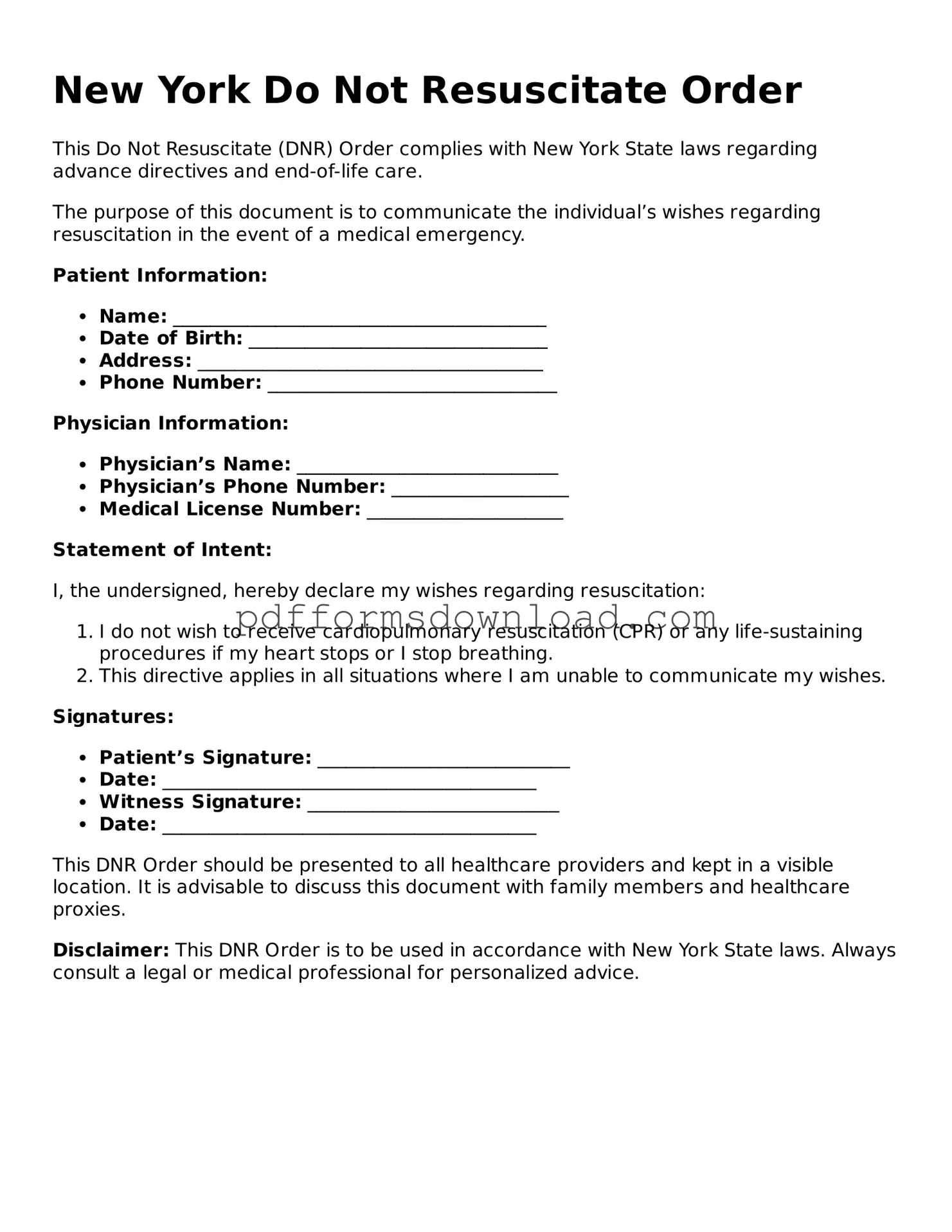What is a Do Not Resuscitate (DNR) Order in New York?
A Do Not Resuscitate Order is a legal document that allows individuals to refuse resuscitation efforts in the event of cardiac arrest or respiratory failure. In New York, this order is intended for patients who have a terminal illness or are experiencing a severe, irreversible condition. It ensures that medical personnel respect the wishes of the patient regarding their end-of-life care.
Who can request a DNR Order?
In New York, a DNR Order can be requested by a patient who is capable of making their own medical decisions. If the patient is unable to communicate their wishes, a legally authorized representative, such as a family member or healthcare proxy, can make the request on their behalf. It is essential that the individual understands the implications of a DNR Order before it is put in place.
How is a DNR Order created in New York?
To create a DNR Order, a patient or their representative must complete the official New York State DNR Order form. This form must be signed by both the patient (or their representative) and a physician. Once completed, the order should be kept in a place that is easily accessible, such as a hospital chart or at home, to ensure that it can be quickly located by medical personnel in an emergency.
What happens if a DNR Order is not available during an emergency?
If a DNR Order is not available when emergency medical personnel arrive, they are required to perform resuscitation efforts. It is crucial for individuals with a DNR Order to carry a copy of the document with them at all times, especially when traveling or visiting healthcare facilities. This ensures that their wishes are honored in critical situations.
Can a DNR Order be revoked?
Yes, a DNR Order can be revoked at any time by the patient or their representative. To revoke the order, the individual should inform their healthcare provider and ensure that the DNR Order is removed from their medical records. It is advisable to document the revocation in writing to avoid any confusion in the future.
Will a DNR Order affect other medical treatments?
A DNR Order specifically addresses resuscitation efforts and does not affect other medical treatments. Patients can still receive all other necessary medical care, including medications, pain management, and comfort measures. It is important to discuss any concerns about treatment options with healthcare providers to ensure that all aspects of care align with the patient's wishes.
Where can I find the New York State DNR Order form?
The New York State DNR Order form can be obtained from various sources, including healthcare providers, hospitals, and online through the New York State Department of Health website. It is advisable to ensure that you are using the most current version of the form to avoid any issues during its implementation.
